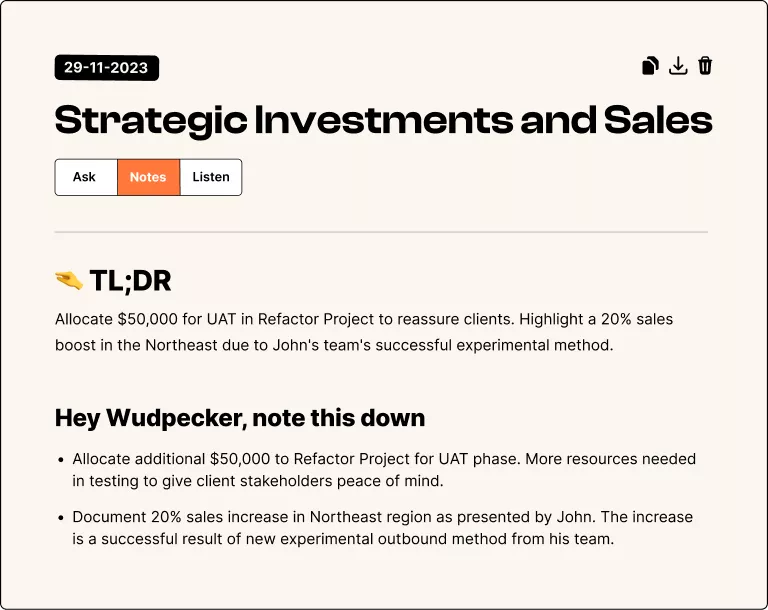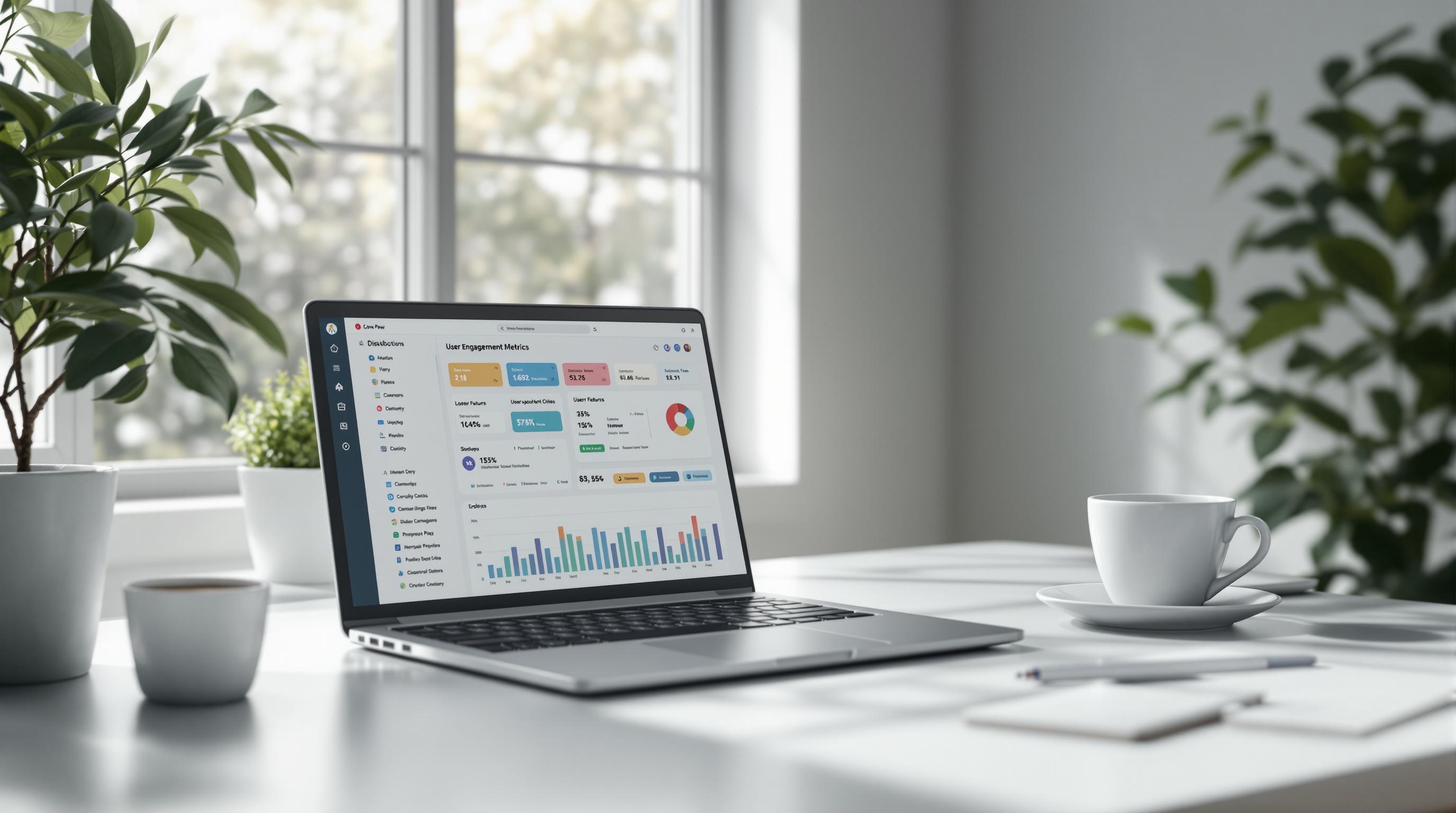Want to reduce customer churn in your SaaS business? Start by analyzing user behavior.
Churn, or when customers cancel their subscriptions, directly impacts revenue and growth. By identifying patterns like reduced logins, low feature usage, and disengagement, you can predict and address churn risks early.
Key Takeaways:
- Churn Indicators: Fewer logins, minimal feature adoption, and increased support tickets.
- Detection Tools: Use analytics platforms like Userlens to track behavior in real-time.
- Prevention Strategies: Segment users, monitor activity, provide support, and adjust pricing or features.
- Measure Success: Focus on metrics like Net Revenue Retention (NRR) and Time-to-Value (TTV).
Act quickly when you spot churn signals to retain customers and boost long-term growth.
The Challenge of Predicting Churn in the Enterprise World ...
Warning Signs of Customer Churn
This section highlights specific behavioral patterns that often come before customer churn. Spotting these signs early can help businesses take action to keep their customers.
Drops in Usage
A noticeable decline in engagement - fewer logins, shorter session times, or a drop in active users (especially within team accounts) - can be a red flag for dissatisfaction.
Changes in Feature Usage
When customers start using fewer core features, leave workflows incomplete, or show less activity from administrators, it may suggest they no longer see the same value in the product.
Shifts in Customer Support Behavior
A spike in customer support activity - like more tickets, negative feedback, urgent requests, or billing-related questions - can point to deeper issues that need attention.
Tools like Userlens can help by analyzing these behaviors and turning them into useful insights. For example, its activity dots visually track engagement and feature usage, making it easier to identify accounts that may be at risk.
Looking at these signs together gives a clearer picture of customer health and helps businesses act quickly to prevent churn.
Churn Prevention with Product Analytics
Product analytics provides a detailed look into how users interact with your product, making it easier to address churn risks early. By analyzing usage patterns, you can create targeted strategies to keep users engaged.
User Group Analysis
Breaking users into segments helps identify those most likely to leave. Platforms like Userlens offer dashboards with standard cohort analysis for B2B, allowing teams to focus retention efforts on high-risk groups.
Some key factors to consider for segmentation include:
- How often users engage with features
- Patterns in usage frequency
Once high-risk groups are identified, the focus shifts to understanding where users face challenges.
Finding Problem Areas
Heatmaps generated from activity data can reveal where users struggle, which features are underused, and where gaps in their journey exist. These visualizations allow teams to:
- Spot features that aren't being used enough
- Track adoption of key functionalities
- Follow user progress through the product
After identifying these areas, it’s important to monitor activity closely to intervene before users churn.
Live Usage Tracking
Real-time tracking of user activity helps you act on churn signals before they turn into cancellations. Userlens consolidates user details and product usage into a single view, sending instant alerts for inactivity so teams can reach out quickly.
Keep an eye on daily active users and how often key features are used to address potential issues as they arise.
sbb-itb-6285ddb
Acting on Churn Predictions
Once analytics identify customers likely to churn, taking quick and precise action is key. These insights don’t just highlight risks - they also point to specific ways to intervene. By using this information effectively, you can turn potential losses into opportunities for retention.
Targeted Customer Outreach
When churn risks surface, personalized communication is essential. Tailor your outreach to match the specific warning signs:
-
If feature adoption has decreased:
- Schedule product training sessions.
- Share relevant use case examples.
- Provide detailed tutorials for specific features.
-
If overall usage is declining:
- Reach out via email or phone to check in.
- Ask for feedback to uncover pain points.
- Offer hands-on help with implementation.
Act quickly to re-engage users. Tools like Userlens can track activity after these efforts, helping you measure the success of your interventions.
Early Customer Support
After outreach, proactive support plays a major role in preventing churn. Support teams should aim to respond within 24 hours, follow up on incomplete onboarding processes, and check in with inactive users.
Use a mix of automated alerts and personal follow-ups. For instance, if analytics show unusual inactivity, support teams can step in with tailored assistance instead of waiting for customers to ask for help.
Product and Price Updates
Analytics can also guide updates to your product and pricing. Focus on these areas:
- Identify which features drive the most engagement.
- Spot functionality gaps that might be causing frustration.
- Compare pricing tiers with usage patterns.
If customers consistently use only part of a feature set, consider offering more flexible pricing. If they frequently hit usage limits, introducing intermediate tiers could help prevent churn caused by costs.
Product teams should prioritize fixing issues that data shows are repeatedly frustrating users. This ensures development efforts target changes that will have the biggest impact on keeping customers happy.
Measuring Churn Prevention Results
To ensure your churn prevention strategies are working effectively, it's crucial to measure outcomes systematically. This helps validate your approach and identify areas for improvement.
Customer Retention Metrics
Keep an eye on these key metrics to understand how well you're retaining customers:
- Net Revenue Retention (NRR): Tracks how revenue from existing customers changes over time, factoring in expansions and contractions.
- User Engagement Score: Measures how actively users engage with key features, comparing current usage with past trends.
- Time-to-Value (TTV): Evaluates how quickly new users achieve their first meaningful success with your product.
Tools like Userlens simplify monitoring by automatically calculating engagement scores and flagging significant usage changes in real time. This allows teams to act quickly and make data-driven adjustments without waiting for scheduled reviews.
Financial Impact
Assess the financial return of your efforts by focusing on these areas:
- Recovered Revenue: Measure the revenue saved by converting at-risk customers into long-term users.
- Prevention Costs: Track resources spent on retention efforts, such as customer success hours, training, support, or product updates aimed at reducing churn.
Compare these costs with the lifetime value of retained customers to determine the overall effectiveness of your churn prevention program. The goal is to achieve a positive return on investment within a reasonable timeframe.
Improving Prediction Accuracy
Refining churn prediction models is an ongoing process. Focus on these aspects:
- Risk Assessment Accuracy: Monitor false positives and overlooked churn risks to improve prediction reliability.
- Threshold Optimization: Adjust usage thresholds that trigger churn risk alerts to better reflect actual customer behavior.
- Signal Validation: Regularly test and confirm the accuracy of churn indicators through continuous analysis.
Using product analytics to fine-tune these elements ensures prediction models stay accurate, enabling teams to take proactive steps to prevent churn. Better predictions mean more effective strategies to keep customers engaged.
Conclusion
Predicting churn in B2B SaaS requires a strong focus on data. By analyzing the right metrics, companies can identify churn risks before they lead to lost revenue.
Tools like Userlens help teams track engagement patterns and catch early warning signs. When usage data is paired with customer feedback, businesses gain a clearer picture, allowing for timely and informed responses.
The key to reducing churn lies in quick, focused actions based on behavior analysis - pinpointing valuable features and areas for improvement to guide product updates and customer success efforts. This makes retention strategies more precise and impactful.
With the help of product analytics, companies can lower churn rates, increase customer lifetime value, and build stronger, lasting relationships that support long-term growth.
Related Blog Posts



.svg)



















.svg)
